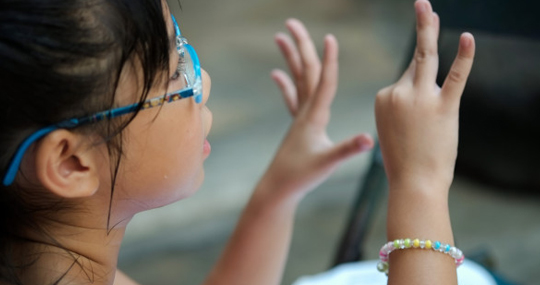Approach
Behaviouristic
At Dew Drops, we used evidence-based therapy to evaluate social and other environmental modifications to produce an effective change in the child’s behavior. It comprises direct observation, measurement, and functional behavior assessment. The practice of our approach is rooted in data and ensures a program that is individualized, dynamic, and effective.
The behavioristic approach is determined by past and present environmental events and comprises contingencies with other genetic or environmental variables. It focuses on treating the problem areas by

assessing the function of the maladaptive behavior and thus support the learning or appropriate functional behavior. This approach has been backed by research and is effective for the disabilities like autism, ADHD, and other childhood disorders like anxiety and depression. It addresses the concerns like maladaptive behavior, attention skills, play skills, social and communication skills, imitation skills, and functional academic skills, etc.

Developmental
Children with developmental disabilities especially ASD have deficits in social- emotional abilities. They face difficulty in initiating of sustaining interaction until it is need based. This approach focuses on teaching children how to develop emotional connect. The developmental approaches are based on structured interactions and builds behavioral, cognitive and social skills. Since the therapy can be in the natural setting therefore any one trained in these principles can conduct sessions including parents and siblings. Usually, the therapy or the session is conducted one on one between a child and a therapist or adult but they can also be conducted with multiple children or adults at the same time.
The sessions are very engaging and consists of communication including action and response. The intent to communicate can be either verbal or nonverbal. The daily routine and environmental setting of the child is kept in mind while making intervention strategies that is unique to the child’s needs. It is an engaging process where we follow the child’s lead and use that flow to facilitate social problem solving as well as teaching tolerance for stress. This process creates opportunities to think creatively as well as understand dynamic patterns like abstract thinking.
Visual
This is a multi-facet approach which focusses on the essential aspects of a child’s life which can impact his/her growth and learning. It involves structure in the child’s environment with respect to physical boundaries as well as maintaining regularity and consistency in the child’s routine with the help of visual aids. Another very important aspect of this approach is clarity in expectations from the child. This can include academic, behavioral or related to any activity which eventually facilitates independent work and functioning. To achieve all these, visual cues play an essential role as it supplements the verbal instructions received by the child.

A child with little or no verbal communication skills can really benefit from this approach of intervention. Research has shown that using visual aid to communicate in such cases can assist in managing behavioral issues as it is proven to help in decreasing tantrums and atypical behaviour. Moreover, since it aids communication, the visual approach also creates opportunity for the child and the adults to connect better with each other. Therefore, fostering positive social skills and behaviors.
